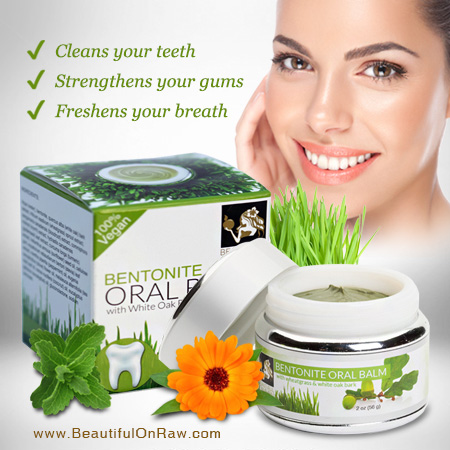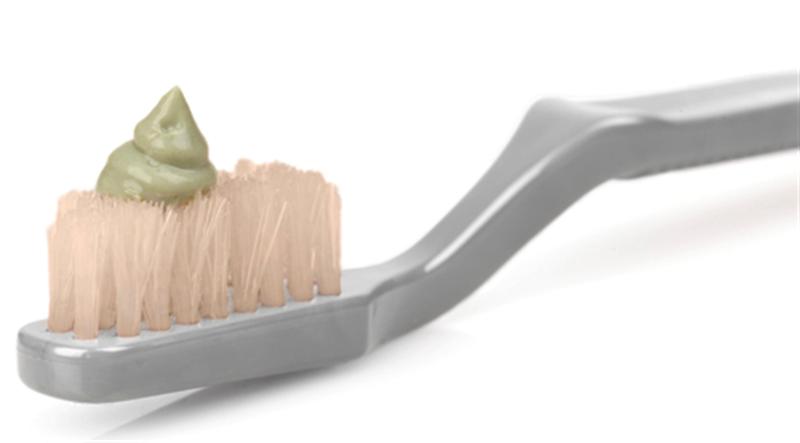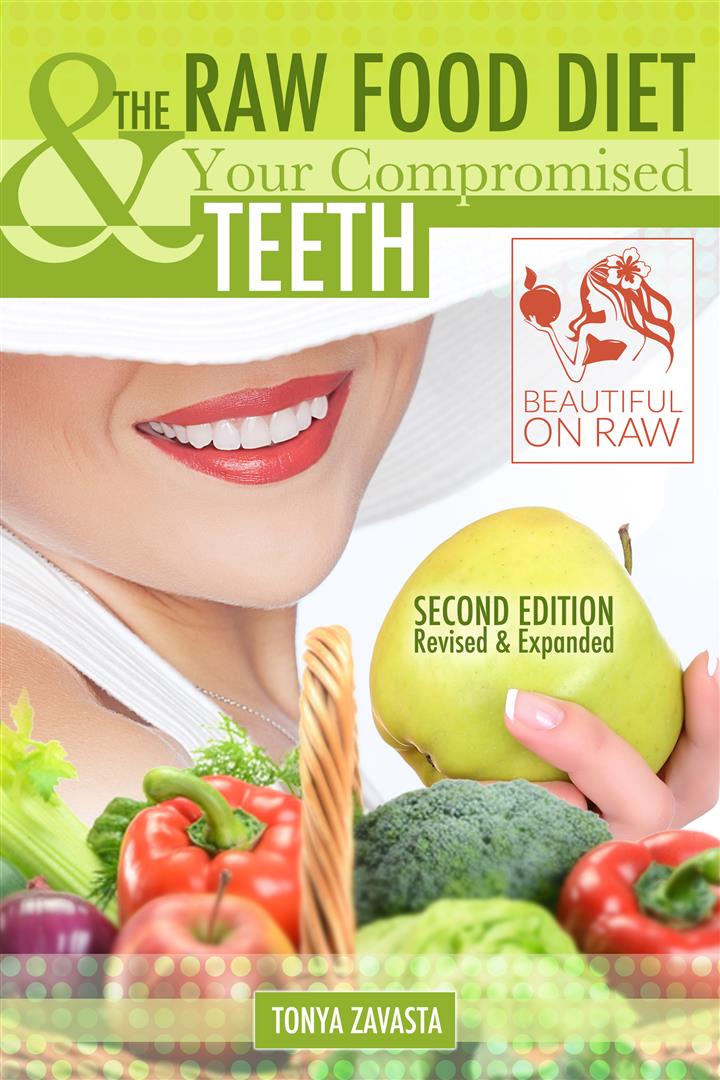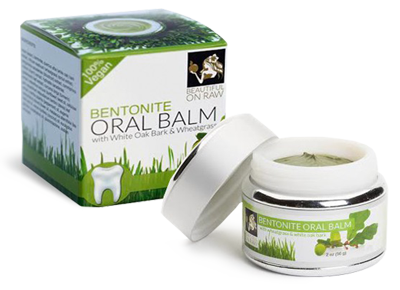Gum Disease...What Can You Do?

What is Gum Disease?
Some dental issues are subtle as a hand grenade. Gum disease—loosely speaking, gingivitis, though that term has a more precise meaning—is one of these.
Gum disease goes undetected, often, till late in the game. Gum disease is also epidemic. Literally. That’s what the Surgeon General of the United States labeled it in a 25 May, 2000 press release - a “silent epidemic,” because it's so often unnoticed, undealt with, in so many people. How many? Say some estimates, an actual majority of Americans have gingivitis in some degree. Most will acquire the disease at some stage of life.

Gum Disease and Raw Foods
What's the connection with raw food? Let's look first at the connection with health. In the Surgeon General's parlance, oral health is a “mirror for general health and well being.” Good dental health is an integral part of the whole health picture. You cannot have one without the other, and having healthy gums generally means healthy teeth. Tooth decay and cavities are only part of the problem. We all know that plaque can lead to tooth decay, but if left unchecked, plaque leads to gum disease, which is insidious, with far-reaching effects.
Symptoms of Gum Disease
Red, swollen gums that bleed easily are often the first easily visible indication that gum disease is present. By then, it's already a serious issue. This stage is known technically as gingivitis. Left untreated, plaque will turn to tartar and erode gum tissue. The final phase of gum disease is periodontitis, which infects gums, bones, even the ligaments that hold teeth in place in the jaw. What's more, periodontal disease can reach so far as to affect the immune system and heart health.
Treatment of Gum Disease
Often the only solution for advanced gum disease is gum surgery. The surgeon will scrape all the infected tissue from your gums. You usually end up with gums receded lower than would otherwise be necessary. Such gum surgery, radical as it may sound, is not curative - it does not address the problem, only the symptoms. And you can be sure that without further treatment those symptoms are coming back. Beyond mind-numbing pain in your mouth, there's the matter of pain on your wallet—gum surgery is decidedly expensive.
Those of us pursuing a raw food diet are after superior, vibrant physical health, not only in the body generally, but in the mouth as well. One thing we raw foodists are usually good at is discipline. But few, even in an increasingly health-conscious population, tend to be disciplined in matters of dental and oral health.
Most people are familiar notionally with the concept that it's important to brush and floss after every meal to prevent plaque buildup. But I haven't met a whole lot of people who adhere very strictly to that. Perhaps surprisingly, quite a few raw food eaters presume that their healthier eating habits will automatically confer superior oral, dental, and gum health. They think since their food is raw and natural, it's healthy - so why worry?
Preventing Gum Disease
A quick once - over with a toothbrush doesn't work, in the long run, for anyone - raw foods fans included. Trouble - both for your teeth and for your gums - often begins between teeth. Among the things that have helped me: those soft gum picks that look like a Christmas tree - a very effective cleaning tool to use after each meal. Chewing a healthy gum is another excellent solution for between-teeth cleaning, especially if you've got a pure, all-organic gum with a tarty edge to help curb your appetite.
Even raw foods will lead to plaque buildup if you fail to follow a good oral hygiene regimen. Plaque is the prime culprit in contributing to gum disease, but there are several other factors that come into play. Sugar and high-carbohydrate foods are the number one cause of plaque leading to gum disease.
Fruit, especially dried fruits, contribute mightily to tooth decay and gum disease, unless you follow the recommendations in The Raw Food Diet and Your Compromised Teeth. The cause: sugars left on tooth and gum surfaces after eating. One strong recommendation for preserving the health of your teeth and gums: Consume your fruit combined with leafy greens, as for example with kale, in Green Smoothies.
Eating soft, mushy cooked foods, low in fiber because that fiber has been broken down in the cooking process, affects gums detrimentally. Chewing is vital to healthy teeth and gums. We tend to think of the jaws, both the upper (the maxilla) and the lower (the mandible) as rigid frames holding our teeth. They’re not rigid. They work best when kept flexible. Chewing puts pressure on the bones, which keeps them healthy, improves circulation in the gums, and produces saliva, which contains plaque-fighting enzymes.
Soft cooked foods, apart from having lost much nutritional value, leave us with nothing to sink our teeth into. As discussed in "The Raw Food Diet and Your Compromised Teeth”, chewing is vital for keeping teeth and gums healthy. Chewing stimulates saliva, which helps fight plaque and re-enemalize teeth, and it exercises muscles and bones in the jaw, preventing deterioration. Raw foods are high in minerals as well which further contributes to dental health.

Reversing Gum Disease
What if you already have compromised teeth? Such potential troubles may include root canal-treated teeth, veneers, crowns, bridges, even teeth subjected to regular whitening. You must be even more vigilant, because if your gums are not kept in ideal shape, an already unstable condition will deteriorate before you know it.
Dentists usually stress prevention - to their credit, because once gum disease has a hold it is difficult to treat. One treatment offered for advanced gum disease is called periodontal osseous surgery. But it’s risky, as is all surgery, and can be prohibitively costly. Prevention is always a better idea than treatment and the costs are vastly less. Not only that, but problems treated via gum surgery often came back. Moreover, when portions of your gums are removed, you have less gum to cover your teeth resulting in exposed roots and increased sensitivity.
Eating a raw food diet will help immensely to improve your gum health for several reasons. Raw foods afford you the best in chewing action, and raw foods are higher in minerals than cooked food which contributes to healthy teeth and gums from inside and out. Aside from chewing food thoroughly, it is most helpful to chew an all-natural gum such as Siberian Pine Resin Gum after eating, even if you only ate a piece of fruit or another snack. If you can’t get to a toothbrush and floss after eating, rinsing with salt water will help neutralize acids and kill bacteria.
For hundreds of years people all over the world have been using certain herbs, such as white oak bark, goldenseal and myrrh to successfully combat it. We have proudly added these herbs to our Bentonite Oral Balm with White Oak Bark and Wheatgrass - the perfect all-natural, organic substitute for conventional commercial toothpastes which can damage your teeth.
There’s a definite connection between acidity and gum disease. That’s the valuable insight given to us by a 2001 study, “The relevance of pH to gingivitis and periodontitis.” The study sampled forty-two people. Each had gingivitis or periodontitis or both. Investigators measured pH—the degree of acidity or alkalinity—all around the mouth, and particularly at the specific sites of disease.
The first finding: High acidity (low pH values) correlates with disease locations. The second finding: Within single pockets of disease, pH values ranged from a slightly alkaline 9 to a highly acidic 2. This suggests different values link with varied processes of healing within tissues, with higher acidity associated with the more seriously diseased tissue.
What we’ve learned: Higher alkalinity means better health in the mouth. Wheatgrass is strongly alkaline—pH 12 to 14. No wonder, then, many testimonials claim wheatgrass juice makes gums feel and look healthier. I’ve included wheatgrass extract in our Oral Balm for just that reason. Try it and see for yourself. 100% satisfaction guaranteed. To find out more, visit Bentonite Oral Balm with White Oak Bark and Wheatgrass.


